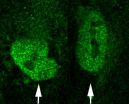(Press-News.org) Bad news about the economy could cause you to pack on the pounds, according to a new study published in Psychological Science, a journal of the Association for Psychological Science.
The study shows that when there is a perception of tough times, people tend to seek higher-calorie foods that will keep them satisfied longer. When subconsciously primed with such messages, a "live for today" impulse is triggered causing people to consume nearly 40 percent more food than when compared to a control group primed with neutral words.
"The findings of this study come at a time when our country is slowly recovering from the onslaught of negative presidential campaign ads chalked with topics such as the weak economy, gun violence, war, deep political divides, just to name a few problem areas," said Juliano Laran, an assistant professor of marketing at the University of Miami School of Business Administration, who conducted the research with doctoral student Anthony Salerno. "Now that we know this sort of messaging causes people to seek out more calories out of a survival instinct, it would be wise for those looking to kick off a healthier new year to tune out news for a while."
Further, when the same group primed with "tough times" messages was then told the food they were sampling was low-calorie, they consumed roughly 25 percent less of the food. According to the researchers this is because if people perceive that food resources are scarce, they place a higher value on food with more calories.
Several studies were conducted as part of the research. In the first one, the researchers invited study subjects to join in a taste test for a new kind of M&M. Half the participants were given a bowl of the new candy and were told that the secret ingredient was a new, high-calorie chocolate. The other half of the participants also received a bowl of M&Ms but were told the new chocolate was low-calorie. All of the participants were told that they could sample the product in order to complete a taste test evaluation form.
In reality, there was no difference in the M&Ms that the two groups were given to taste. The researchers were actually measuring how much participants consumed after they were exposed to posters containing either neutral sentences or sentences related to struggle and adversity. Those who were subconsciously primed to think about struggle and adversity ate closer to 70 percent more of the "higher-calorie" candy vs. the "lower-calorie" option, while those primed with neutral words did not significantly differ in the amount of M&M's consumed.
"It is clear from the studies that taste was not what caused the reactions, it was a longing for calories," continued Laran. "These findings could have positive implications for individuals in the health care field, government campaigns on nutrition, and companies promoting wellness. And, certainly beware of savvy food marketers bearing bad news."
###
For more information about this study, please contact: Anthony Salerno at asalerno12687@hotmail.com.
The APS journal Psychological Science is the highest ranked empirical journal in psychology. For a copy of the article "Life-History Strategy, Food Choice, and Caloric Consumption" and access to other Psychological Science research findings, please contact Anna Mikulak at 202-293-9300 or amikulak@psychologicalscience.org.
END
BOSTON—Large-scale genomic sequencing has revealed two DNA mutations that appear to drive about 15 percent of brain tumors known as meningiomas, a finding that could lead to the first effective drug treatments for the tumors, report scientists from Dana-Farber Cancer Institute and the Broad Institute.
Surgery and radiation currently are the only treatments for meningiomas – slow-growing, often benign tumors that develop in the membranes surrounding the brain. Meningiomas can grow dangerously large, however, causing seizures and limb weakness, and occasionally are fatal. ...
Irvine, Calif., Jan. 22, 2013 — UC Irvine-led studies have revealed the cellular mechanism by which circadian rhythms – also known as the body clock – modify energy metabolism and also have identified novel compounds that control this action. The findings point to potential treatments for disorders triggered by circadian rhythm dysfunction, ranging from insomnia and obesity to diabetes and cancer.
UC Irvine's Paolo Sassone-Corsi, one of the world's leading researchers on the genetics of circadian rhythms, led the studies and worked with international groups of scientists. ...
COLUMBUS, Ohio – A new study could provide the link that scientists have been looking for to confirm that reactivation of a latent herpes virus is a cause of some heart problems.
Looking at blood samples from 299 heart patients, researchers at Ohio State University found that those who had suffered a heart attack were the most likely to have inflammatory proteins circulating in their blood compared to patients with less acute symptoms. And having more of one of these proteins in the blood was linked to the presence of antibodies that signal a latent Epstein-Barr virus ...
Muscular dystrophy is caused by the largest human gene, a complex chemical leviathan that has confounded scientists for decades. Research conducted at the University of Missouri and described this month in the Proceedings of the National Academy of Sciences has identified significant sections of the gene that could provide hope to young patients and families.
MU scientists Dongsheng Duan, PhD, and Yi Lai, PhD, identified a sequence in the dystrophin gene that is essential for helping muscle tissues function, a breakthrough discovery that could lead to treatments for the ...
NASA's Aqua satellite documented the formation of Tropical Storm Oswald in the Gulf of Carpentaria on Jan. 21 and the landfall on Jan. 22 in the southwestern Cape York Peninsula of Queenstown, Australia. Oswald has since become remnant low pressure area over land.
Tropical Storm Oswald was hugging the southwestern coast of the Cape York Peninsula, Queensland, Australia when NASA's Aqua satellite first flew overhead on Jan. 21 at 0430 UTC (Jan. 20 at 11:30 p.m. EST). The Moderate Resolution Imaging Spectroradiometer (MODIS) instrument aboard NASA's Aqua satellite captured ...
Jan. 22, 2013 - A common type of bacteria may help pigs stay healthy during weaning.
In a study of 36 weanling-age pigs, researchers found that a dose of lipid-producing Rhodococcus opacus bacteria increased circulating triglycerides. Triglycerides are a crucial source of energy for the immune system.
"We could potentially strengthen the immune system by providing this bacterium to animals at a stage when they are in need of additional energy," said Janet Donaldson, assistant professor in Biological Sciences Mississippi State University. "By providing an alternative ...
A novel software tool, developed at The Children's Hospital of Philadelphia, streamlines the detection of disease-causing genetic changes through more sensitive detection methods and by automatically correcting for variations that reduce the accuracy of results in conventional software. The software, called ParseCNV, is freely available to the scientific-academic community, and significantly advances the identification of gene variants associated with genetic diseases.
"The algorithm we developed detects copy number variation associations with a higher level of accuracy ...
This flu season you've probably seen a number of friends on social media talking about symptoms.
New research from Brigham Young University says such posts on Twitter could actually be helpful to health officials looking for a head start on outbreaks.
The study sampled 24 million tweets from 10 million unique users. They determined that accurate location information is available for about 15 percent of tweets (gathered from user profiles and tweets that contain GPS data). That's likely a critical mass for an early-warning system that could monitor terms like "fever," ...
NEW BRUNSWICK, N.J. – Coming out to one's family can be stressful, but gay black males face a unique set of personal, familial and social challenges.
"Parents and youths alike worry that gay men cannot meet the rigid expectations of exaggerated masculinity maintained by their families and communities," says Michael C. LaSala, director of the Master of Social Work program at Rutgers University School of Social Work. LaSala, an associate professor, recently completed an exploratory study of African American gay youth and their families from urban neighborhoods in New York ...
BUFFALO, N.Y. – New University at Buffalo research demonstrates how defects in an important neurological pathway in early development may be responsible for the onset of schizophrenia later in life.
The UB findings, published in Schizophrenia Research (paper at http://bit.ly/Wq1i41), test the hypothesis in a new mouse model of schizophrenia that demonstrates how gestational brain changes cause behavioral problems later in life – just like the human disease.
Partial funding for the research came from New York Stem Cell Science (NYSTEM).
The genomic pathway, called the ...


